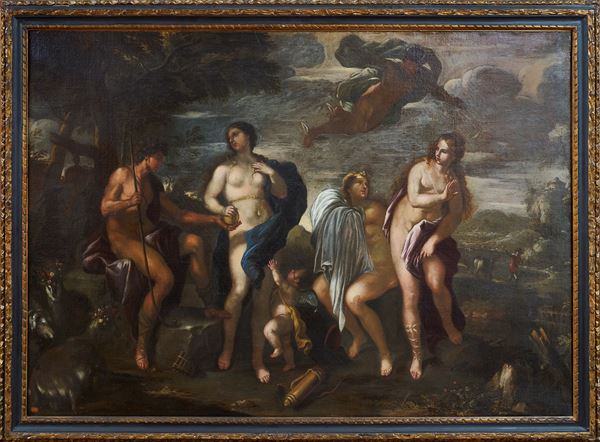95
cerchia di Luca Giordano (Napoli, 1634 – 1705)
Il giudizio di Paride
Oil on canvas
cm 125 x 177
The painting proposed here shows compositional affinities with the prototype created by Luca Giordano in the 80s of the seventeenth century, The main example is considered to be the one preserved in the large private collection (197x2529 cm) and signed by the painter. The Rubens iconography is very successful and is known for many variations, who chooses to articulate the story in a complex setting, with Paris on one side and the Graces on the other, seizing the moment when the golden apple is awarded.
This version highlights the thickness of the brushstrokes, the complexions and the draperies with typical characteristics of the stylistic signature of that period; It also differs from other replicas of the workshop for a particular and refined decorative sense, which suggests it may have been intended to furnish noble homes.
This latter hypothesis is also supported by the origin of the canvas that furnished the eighteenth-century palace of an ancient family of Campania.
Bibliography of comparison: Luca Giordano 1634-1705. Catalogue of the exhibition, Naples 2001 p. 38, 42 and 210
€ 15.000,00 / 20.000,00
Estimate




